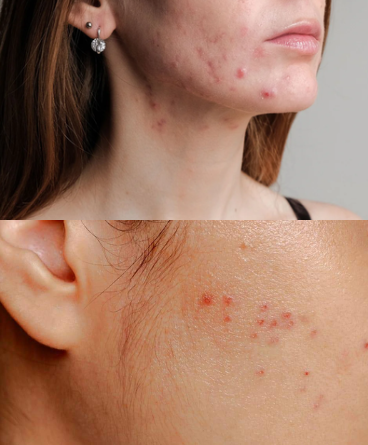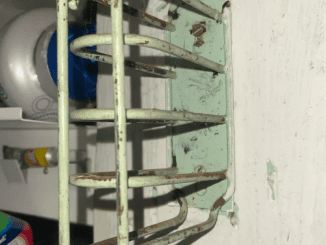
Acne can feel like an unsolvable puzzle. Just when you think you’ve figured out the culprit behind your breakouts, another one shows up. But here’s the truth: not all acne is the same. Two of the most common types—hormonal acne and bacterial acne—may look similar at first glance, but they have very different causes and treatments.
If you’ve ever wondered why your breakouts flare up in specific patterns or why some pimples linger as painful cysts, this guide is for you. Let’s break down the differences and discover the best strategies for clearer skin.
What Is Hormonal Acne?
Hormonal acne happens when fluctuations in hormones, particularly testosterone, ramp up oil (sebum) production. Excess oil clogs pores, trapping bacteria and leading to stubborn breakouts. These shifts are often tied to puberty, menstrual cycles, pregnancy, or conditions like PCOS and menopause.
Think of it as your skin reacting to an internal rollercoaster—every dip and rise in hormones leaves a mark.
Who Is Most Prone to Hormonal Acne?
Hormonal acne doesn’t discriminate, but certain groups face it more often:
- Teenagers during puberty
- Women experiencing menstrual cycles, pregnancy, or menopause
- Individuals with PCOS or other hormonal imbalances
These shifts explain why hormonal acne usually strikes in predictable waves, often showing up on the lower face, jawline, and neck.
Key Characteristics of Hormonal Acne
Not sure if your breakouts are hormone-driven? Look for these signs:
- Appearance: Deep, painful cysts that rarely come to a head
- Location: Jawline, chin, and lower cheeks
- Timing: Flare-ups that match your cycle, stress levels, or life changes
Unlike surface pimples, these blemishes feel like they’re brewing under the skin, making them harder to treat with regular spot creams.
What Is Bacterial Acne?
Your skin naturally hosts a community of bacteria—most harmless, some not. Bacterial acne develops when acne-causing bacteria, particularly P. acnes, multiply out of control in clogged pores. This overgrowth sparks inflammation, swelling, and the classic red pimples you’re used to seeing.
Unlike hormonal acne, bacterial acne doesn’t follow a predictable cycle. It can pop up anytime your skin barrier gets disrupted.
What Triggers Bacterial Acne?
Several factors can tip the balance and invite bacterial flare-ups:
- Excess oil production
- Dirty pillowcases, makeup brushes, or phone screens
- Heavy, pore-clogging skincare or cosmetics
- Lack of consistent cleansing routines
Essentially, bacterial acne thrives when your skin’s environment becomes a breeding ground.
Identifying Bacterial Acne
Here’s how to tell if your acne is bacterial:
- Appearance: Red, inflamed pimples or pus-filled pustules
- Location: Forehead, nose, and cheeks (the oily T-zone)
- Triggers: Poor hygiene, heavy skincare products, or high oil activity
These breakouts are usually closer to the surface and respond more quickly to antibacterial treatments.
Video : Stress Acne vs. Hormonal Acne: How to Spot and Treat the Difference
Hormonal vs. Bacterial Acne: Spotting the Difference
At first, acne is just acne. But knowing the type helps you choose the right approach.
- Hormonal Acne: Deep, cystic, located on the jawline and chin, flares with cycles
- Bacterial Acne: Surface-level, red pimples or pustules, scattered across oil-prone areas, often random
Think of hormonal acne as a storm brewing from within, while bacterial acne is more like an external invasion.
Can You Have Both at the Same Time?
Unfortunately, yes. Hormonal shifts can increase oil production, which feeds bacteria—creating the perfect storm for dual breakouts. When both collide, treatment requires tackling internal hormone balance and external bacterial control together.
Treatment Options for Hormonal Acne
Treating hormonal acne means addressing the root cause, not just the symptoms. Here are effective options:
- Smart Skincare: Choose gentle, non-comedogenic cleansers. Add retinol to speed up cell turnover and regulate oil production.
- Lifestyle Choices: Reduce stress with yoga, meditation, or exercise. Balance your diet by limiting high-sugar and high-dairy foods.
- Medical Support: For severe cases, dermatologists may recommend hormonal therapies like birth control pills or spironolactone.
Treatment Options for Bacterial Acne
Bacterial acne thrives on imbalance, so the key is restoring order.
- Topical Solutions: Salicylic acid unclogs pores, while benzoyl peroxide kills acne-causing bacteria. Retinoids can help resurface skin.
- Antibiotics: For stubborn cases, oral or topical antibiotics may be prescribed to control bacterial overgrowth.
- Hygiene Habits: Wash pillowcases regularly, clean makeup tools, and avoid touching your face with unwashed hands.
The Overlap: When Both Types Collide
Sometimes, your skin faces a double attack—deep cystic lesions mixed with inflamed, pus-filled pimples. This overlap calls for a multi-pronged approach: balancing hormones, exfoliating clogged pores, and minimizing bacterial growth all at once.
Working with a dermatologist ensures you’re not just guessing but addressing both sides of the issue.
Fungal Acne: The Look-Alike You Might Mistake
Here’s a curveball: not every breakout is hormonal or bacterial. Fungal acne—caused by yeast overgrowth—often appears as tiny, itchy bumps on the forehead or temples. Unlike other acne, it needs antifungal treatments, not antibiotics or retinoids. Misdiagnosing it can make things worse.
When to Seek Professional Help
If your acne feels uncontrollable or leaves scars behind, it’s time to see a dermatologist. A professional can test for hormonal imbalances, bacterial infections, or even fungal involvement—and prescribe targeted treatments you won’t find over the counter.
Building a Preventive Routine
Long-term acne control comes down to consistency:
- For hormonal acne: Stick to a skincare routine, manage stress, and prioritize quality sleep
- For bacterial acne: Keep skin clean, avoid pore-clogging products, and support your barrier with hydrating, gentle care
- For everyone: Stay hydrated, protect your skin with sunscreen, and keep makeup light and breathable
Video : The Different Types of Acne and How to Treat Them
The Final Takeaway
Acne is more than skin deep—it reflects the delicate balance between your body’s internal systems and the external world. Hormonal acne stems from fluctuations within, while bacterial acne grows out of external imbalances. Understanding which one you’re dealing with empowers you to choose the right treatments, prevent future breakouts, and feel more in control of your skin.
Clearer, healthier skin isn’t about quick fixes—it’s about working with your body, not against it.


